Searched: United and States
News
A Child-Centered Society
The Netherlands and the UN Convention on the Rights of the Child
If you could choose any country in the world in which to raise your child, which would you choose?
You might be inclined to choose the comforts of the United States or Britain, the charm of European mainstays like France and Germany, the [...]
|
From another report about poisoned toys coming from China: "Customs and Border Protection officers assigned to the Port Everglades Trade Enforcement Team seized over 3,500 toys in two separate merchandise seizures entering Port Everglades from China, the agency said on Friday..."
"The federal officers also made another seizure at Port Everglades involving 1,440 toy soldiers also coming from China. Officials from the Consumer Product Safety Commission tested the toys and determined that these toy soldiers contained excessive lead in the paint and were in violation of the lead paint ban as they posed lead poisoning hazard."
If you home school like we do, you are shielded from the peer driven and media driven demand for this plastic stuff. Sure, we would like to have some of this otherwise neat stuff... but our love for the Chinese people who suffer under communism far outweighs our desire to amuse ourselves.
While most Americans have probably forgotten the Chinese toys of death scare from 2007... below is a repost that explains my sentiments:
Chinese "Date Rape" Beads of Death
The Herald Tribune is reporting that "Aqua Dots" Chinese-made children's toys contain the 'date rape' drug.
Scientists say a chemical coating on the beads, when ingested, metabolizes into the so-called date rape drug gamma hydroxy butyrate. When eaten, the compound — made from common and easily available ingredients — can induce unconsciousness, seizures, drowsiness, coma and death.
Could this Chinese toy thing get any stranger? Lead, asbestos, gamma hydroxy butyrate... could they try any harder to make this look like a sinister communist plot to kill American children?
We have long boycotted Chinese made products -- yes, it is possible. It takes more time shopping and sometimes we go home empty handed. But, like most Americans, who needs more stuff? As someone who loves toys, those three little words - Made in China - sure help us save a lot of money. Try it; just put the stuff back on the shelf.
Our little family is like a chorus going through a toy store: "Made in China", "Made in China", "Made in China". I believe those are the first words most of our children learned to read -- dad's homeschool of consumer awareness.Â
Our little boycott started, not because of consumer safety reasons, but because the communists represent real evil in this world. Christians are persecuted in China. Political freedom is suppressed. Individual expression is punished. Information is controlled by the state. Every industry profits from slave labor (through forced labor of political prisoners in energy and mining). And, women are forced to have abortions.
Also, a portion of every dollar that goes to China gets invested into the PLA (Peoples Liberation Army), China's military, which is engaged in a great strategic expansion in anticipation of the coming conflict with the United States. Historically, China views the United States as an enemy. All of their military build-up is targeted at countering the United States -- anti-satellite weapons to target our communications, blue water navy and submarines to counter our aircraft carriers, hacking to disrupt our information infrastructure, anti-surface missiles to counter our navy, short and medium range missiles to target Taiwan and US bases in Asia, ICBM's to target American cities.
Please pray that this coming conflict does not come to pass. Pray that the communist government of China would be destroyed and freedom would come to the Chinese people. Too long have they suffered under the suppression of totalitarian government (at key historical points reinforced by western powers).Â
 In 1989 brave individuals stood up for political reform in China, the result was death and prison for thousands. The west largely ignored these tyrannical acts and expanded trade relations with China. Trade has done little since then to give the Chinese people political freedom. Instead, the power of the communist dictators has been reinforced and strengthened by the influx of western cash.
Please stop giving your cash to China; instead give them your prayers and determination to see them free to worship Christ as you do. Don't you think that is a better lesson for your children then that plastic (and perhaps lead painted) toy?
In 1989 brave individuals stood up for political reform in China, the result was death and prison for thousands. The west largely ignored these tyrannical acts and expanded trade relations with China. Trade has done little since then to give the Chinese people political freedom. Instead, the power of the communist dictators has been reinforced and strengthened by the influx of western cash.
Please stop giving your cash to China; instead give them your prayers and determination to see them free to worship Christ as you do. Don't you think that is a better lesson for your children then that plastic (and perhaps lead painted) toy?
|
Barack Obama will place his hand on the Bible and swear an oath to serve the United States.
|
If you have been considering homeschooling, let that public school indoctrinated peer pressure kick in...
From WND:ÂÂ
A homeschooling movement is sweeping the nation – with 1.5 million children now learning at home, an increase of 75 percent since 1999.
The Department of Education's National Center for Education Statistics reported homeschooling has risen by 36 percent in just the last five years.
"There's no reason to believe it would not keep going up," NCES statistician Gail Mulligan told USA Today.
A 2007 survey asked parents why they choose to homeschool and allowed them to provide several reasons. The following are the most popular responses:
Concern about the school environment, including reasons such as safety, drugs or negative peer pressure – 88 percent
A desire to provide religious or moral instruction – 83 percent
A dissatisfaction with academic instruction at other schools – 73 percent
Nontraditional approach to children's education – or "unschoolers" who consider typical curriculums and standardized testing as counterproductive to quality education – 65 percent
Other reasons, such as family time, finances, travel and distance – 32 percent
Child has special needs (other than physical or mental health problems) that schools cannot or will not meet – 21 percent
Child has a physical or mental health problem – 11 percent
Parents who report that they homeschool to provide religious or moral instruction increased from 72 percent to 83 percent from 2003 to 2007.
Above all other responses, parents cited providing religious and moral instruction as the most important factor in the decision to teach their children at home (36 percent). The second most important issue was concern about the school environment (21 percent), while the third reason was dissatisfaction with academic instruction at other schools (17 percent).
Research has shown the positive effects of homeschooling through the years. While some critics say teaching children at home may stunt their social growth, studies indicate homeschooled students fare well or better than public and private school students in terms of social, emotional and psychological development.
Additionally, homeschoolers earn higher marks than peers who attend public schools. Academic Leadership, an online journal, cites findings from at least three nationwide studies across the United States and two nationwide studies in Canada.
"The home educated in grades K to 12 have scored, on average, at the 65th to 80th percentile on standardized academic achievement tests in the United States and Canada, compared to the public school average of the 50th percentile," it states.
Three studies also show that demographics, income and education level of homeschooling parents are generally irrelevant with regard to quality of education in a home setting. On average, homeschoolers in low-income families with less formal education still score higher than state-school averages.
|
The CLEP US History 1 exam is a 3 credit Social Sciences and History exam that covers the early colonial period of North America though Reconstruction. This was our second CLEP test and overlaps material from CLEP American Government, especially the Constitution, Bill of Rights and Supreme Court cases. Students interested in history should be able to enjoy this exam and do well. Here are the materials we used, our study method and what you must know to pass.Available materials for this exam abound and many are good but our favorites were:InstantCert (invaluable for this exam, especially the feedback section of the forum) The CLEP History of the United States I w/CD (REA) - The Best Test Prep for the
|
So, how do CLEP exams stack up as to difficulty? It is hard to say with precision because College Board and Dantes do not publish their overall pass rates, but the military posts their pass rates online. Military testers can take CLEP or DSST (Dantes) exams for free which could influence their choice to take an exam “cold†or without a lot of preparation. That being said, here are the military pass rates, arranged easiest to most difficult.2008 Pass Rate for Computer-Based Military TestingCLEP/DSST Exam – Pass RateDSST Technical Writing – 94%CLEP Spanish Language – 88%DSST Introduction to Computing – 83% (or 53%)*DSST Introduction to Business – 81%DSST Ethics in America – 82% (or 30%)*CLEP Analyzing and Interpreting Literature – 71%DSST Here’s to Your Health – 70% (or 41%)*DSST Principles of Supervision – 69%CLEP Principles of Management – 67%DSST Business Mathematics – 66%DSST Human Resource Management – 65%CLEP Principles of Marketing – 64%CLEP German Language – 64%CLEP Freshman College Composition – 64%CLEP French Language – 63%DSST Introduction to Law Enforcement – 62%DSST Personal Finance – 61% (or 31%)*DSST Environment and Humanity – 60%DSST Management Information Systems – 58% (or 33%)*DSST Foundations of Education – 56%CLEP Western Civilization 1 – 55%DSST Fundamentals of Counseling – 55%DSST Organizational Behavior – 53%DSST Introduction to World Religions – 53% (or 30%)*DSST Astronomy – 52%DSST Principles of Physical Science 1 – 52%DSST Introduction to Modern Middle East – 49%DSST Business Law 2 – 48%CLEP Social Sciences and History – 47%CLEP Introductory Sociology – 45%CLEP Western Civilization 2 – 44%CLEP Introductory Psychology – 42%DSST Lifespan Developmental Psychology – 42%DSST Human Cultural Geography – 40%CLEP College Mathematics – 40%DSST Criminal Justice – 40% (or 35%)*CLEP Natural Sciences – 40%CLEP Information Systems and Computer Applications – 40%CLEP English Composition with Essay – 39%CLEP Humanities – 37%DSST Rise and Fall of the Soviet Union – 37%DSST Substance Abuse – 37% (or 39%)*DSST Civil War and Reconstruction – 35%DSST Western Europe since 1945 – 35%DSST Art of the Western World – 34%CLEP English Literature – 33%DSST General Anthropology – 33%CLEP History of the United States 2 – 32%CLEP History of the United States 1 – 31%CLEP Biology – 31%CLEP English Composition – 31%CLEP Introduction into Educational Psychology – 29%CLEP Precal – 28%DSST A History of the Vietnam War – 27%CLEP American Government – 24%DSST Principles of Statistics – 24% (or 49%)*DSST Fundamentals of College Algebra – 23% (or 12%)*CLEP Principles of Macroeconomics – 22%DSST Principles of Financial Accounting – 22%CLEP Human Growth and Development – 22%CLEP Introductory Business Law – 21%CLEP Principles of Microeconomics – 20%CLEP American Literature – 18%CLEP College Algebra – 17%CLEP Calculus – 17%DSST Money and Banking – 16%DSST Principles of Finance – 11%CLEP Financial Accounting – 7%CLEP Chemistry – 4%DSST Physical Geology – 2%Bear in mind a few details. These pass rates are for 2008 military on base computer versions of these exams. Some have been modified since these results were compiled. The best way to make an exam easy is to work hard, use the best materials available and study for exams that interest you. And a sure fire edge is being a member of InstantCert.More later on what makes an exam easy.*New updated DSST exams
|
This exam makes a nice end to a 9 credit trilogy of American Government, US History 1 & US History 2. With lots of crossover a high school or college student can earn those 9 credits as each exam builds on the others. US History 2 covers material from the end of the Civil War to Reagan with a few mentions of material of Bush 1 & 2. Here is the material we liked and used, the method that worked for us and what you must know to do well.As with any US History exam there are so many materials available but these rose to the top:CLEP History of the United States II w/CD (REA) - The Best Test Prep for the CLE (Test Preps)
|
Are you pursuing a business degree? Do you see yourself as an entrepreneur? Do you need to set yourself apart from other entry-level employees at work? If you said yes to any of these, maybe CLEP Principles of Management is a course for you.The CLEP Principles of Management exam is a 3 credit Business exam that covers material taught in a college level introductory course in management and organizations. It includes operational and functional aspects of business and human resources. This was our first business exam and it proved to be a good place to start. Here are the materials we used, our study method and what you must know to pass.Many materials are available for this course but the good news for the cost conscious collegiate is our favorites were almost all free or low cost. We purchased the REA Principles of Management Guide with the CD-ROM practice tests but found other materials we preferred. We used:Principles of Management (Cliffs Quick Review)
|
Looking for resources for Constitution Day activities? The Library of Congress has a variety of sources you can use. Explore the Creating the United States online exhibit and learn more about the impact of the Constitution, Bill of Rights and Declaration of Independence on U.S. history. Explore the interactive Constitution where students can learn more about the Constitution and origin of important parts of the Constitution. The Learn More will lead you to links for other exhibits, online resources, webcasts and lessons you can use to help students learn more about the Constitution.
|
Interested in learning strategies to teach about the Declaration of Independence, the Constitution and the Bill of Rights using Library of Congress primary sources? Register to attend the Library of Congress Creating the US Teacher Institute. Participants will leave with strategies and materials they can use in their schools. The institute uses the Library's exhibition Creating the United States as its foundation. Learn how to make this era in our country’s history “come alive†for student using images, manuscripts, letters, photographs, maps, and poetry.
|
The American Patriot's Almanac: Daily Readings on Americaby William J. Bennett? William J. Bennett (Author) › Visit Amazon's William J. Bennett PageFind all the books, read about the author, and more.See search results for this author Are you an author? Learn about Author Central ? and John T.E. Cribb
 I was given the opportunity to review this book through BookSneeze.? The very first thing that comes to mind when I remember taking the time to go through this book is the unmatched value we found in it as a homeschooling family.? The authors have listed one major historical event for every day of the year.? We have had fun reading one of the events each day, and discussing the impact the events must have had on our country!? But the "this day in history" pages are not the only parts of value!There are also several articles, including "Twelve Great Reasons to Love a Great Country", "Flags of the Revolutionary War", "The History of the Stars and Stripes", "Fifty All-American Movies", "Flag Etiquette: Guidelines for Displaying and Handling the U.S. Flag", "How the Declaration of Independence Was Written and Signed", "The Declaration of Independence", How the Constitution Was Written and Ratified", The Constitution of the United States", "The Bill of Rights", "Amendments to the U.S. Constitution Since the Bill of Rights", "The Gettysburg Address", "The Emancipation Proclamation", The Pledge of Allegiance", "The American's Creed", "Songs of American Patriotism", "Poems of American Patriotism", and "Prayers for the American People"!? The collection itself is highly impressive before you get to the real "meat" of the book, which is readable every single day for a year!? I recommend this book constantly to fellow homeschool families.? Even if your children aren't homeschooled, this is a wonderful way to become more involved in your child(ren)'s education.? You can purchase this book on Amazon for a great value!? This link will take you to the ebook edition, but just because of the amazing aesthetics of it, we enjoyed the hard copy!? Thank you for coming to Mingle Over Mocha with Anna! I was given the opportunity to review this book through BookSneeze.? The very first thing that comes to mind when I remember taking the time to go through this book is the unmatched value we found in it as a homeschooling family.? The authors have listed one major historical event for every day of the year.? We have had fun reading one of the events each day, and discussing the impact the events must have had on our country!? But the "this day in history" pages are not the only parts of value!There are also several articles, including "Twelve Great Reasons to Love a Great Country", "Flags of the Revolutionary War", "The History of the Stars and Stripes", "Fifty All-American Movies", "Flag Etiquette: Guidelines for Displaying and Handling the U.S. Flag", "How the Declaration of Independence Was Written and Signed", "The Declaration of Independence", How the Constitution Was Written and Ratified", The Constitution of the United States", "The Bill of Rights", "Amendments to the U.S. Constitution Since the Bill of Rights", "The Gettysburg Address", "The Emancipation Proclamation", The Pledge of Allegiance", "The American's Creed", "Songs of American Patriotism", "Poems of American Patriotism", and "Prayers for the American People"!? The collection itself is highly impressive before you get to the real "meat" of the book, which is readable every single day for a year!? I recommend this book constantly to fellow homeschool families.? Even if your children aren't homeschooled, this is a wonderful way to become more involved in your child(ren)'s education.? You can purchase this book on Amazon for a great value!? This link will take you to the ebook edition, but just because of the amazing aesthetics of it, we enjoyed the hard copy!? Thank you for coming to Mingle Over Mocha with Anna! |
From My Mama's Kitchen by Johnny Tan
 When you think of a Mother, what do you think of?? If you ARE a mother, what words would you hope your children would use to describe you?Loving, helpful, faithful, sincere, encouraging, sweet, self-sacrificing, trufhful, God-fearing, bold, insightful, descretionary, one-of-a-kind, true, protective, open, trusting, unfailing, caring, comforting, honest... the list could go on forever!Johnny has had a unique experience from being adopted, and then "adopting" even more moms (for a total of NINE MOMS!!)? in his journey of life!You will find a little bit of everything in "From My Mama's Kitchen."? It is a book of encouragement for mothers, a book of love and remembrance for children, and soul food for every one else!You can read other reviews for this book on Amazon, HERE.You can buy this book HERE!This is a little bit about the author, Johnny Tan: When you think of a Mother, what do you think of?? If you ARE a mother, what words would you hope your children would use to describe you?Loving, helpful, faithful, sincere, encouraging, sweet, self-sacrificing, trufhful, God-fearing, bold, insightful, descretionary, one-of-a-kind, true, protective, open, trusting, unfailing, caring, comforting, honest... the list could go on forever!Johnny has had a unique experience from being adopted, and then "adopting" even more moms (for a total of NINE MOMS!!)? in his journey of life!You will find a little bit of everything in "From My Mama's Kitchen."? It is a book of encouragement for mothers, a book of love and remembrance for children, and soul food for every one else!You can read other reviews for this book on Amazon, HERE.You can buy this book HERE!This is a little bit about the author, Johnny Tan: Like a pot of the famous Louisiana gumbo, Johnny Tan's life has been richly flavored over the years by his nine moms.In April of 2007, Johnny began recording the various heart-felt memories and words of wisdom expressed and felt in the kitchen setting. The result is From My Mama's Kitchen – “food for the soul, recipes for living.”Adopted at birth in Malaysia, Johnny Tan came to the United States in 1980 to attend college at LSU in Baton Rouge, Louisiana. Here, he began a journey that led him into crossing paths with various women he admiringly referred to as Mom. It is the inspiration, support and life skills that Johnny received from his moms that have guided him towards his pursuit for personal excellence.After college, Johnny worked in the restaurant industry for 18 years. He retired from a successful career as Chief Operating Officer in 2001, to begin a new vocation of running his own business.Living by his very own personal vision and mission statement, Johnny continually uses his gift of creativity to enrich the lives of those who know him and for his community through his fellowship and leadership ability.Johnny is also an accomplished amateur ballroom dancer. He has performed with his dance partners for more than 10 years at various ballroom and charity events in Louisiana and Texas.He currently resides in Dallas, Texas. Check out his website HERE, and listen to his radio show HERE!I hope you enjoy Johnny Tan's work as much as I have!Thank you for coming to Mingle Over Mocha with Anna! Like a pot of the famous Louisiana gumbo, Johnny Tan's life has been richly flavored over the years by his nine moms.In April of 2007, Johnny began recording the various heart-felt memories and words of wisdom expressed and felt in the kitchen setting. The result is From My Mama's Kitchen – “food for the soul, recipes for living.”Adopted at birth in Malaysia, Johnny Tan came to the United States in 1980 to attend college at LSU in Baton Rouge, Louisiana. Here, he began a journey that led him into crossing paths with various women he admiringly referred to as Mom. It is the inspiration, support and life skills that Johnny received from his moms that have guided him towards his pursuit for personal excellence.After college, Johnny worked in the restaurant industry for 18 years. He retired from a successful career as Chief Operating Officer in 2001, to begin a new vocation of running his own business.Living by his very own personal vision and mission statement, Johnny continually uses his gift of creativity to enrich the lives of those who know him and for his community through his fellowship and leadership ability.Johnny is also an accomplished amateur ballroom dancer. He has performed with his dance partners for more than 10 years at various ballroom and charity events in Louisiana and Texas.He currently resides in Dallas, Texas. Check out his website HERE, and listen to his radio show HERE!I hope you enjoy Johnny Tan's work as much as I have!Thank you for coming to Mingle Over Mocha with Anna! |
News from the Library of Congress2021 National Film Registry, Latinos in Public Media & More
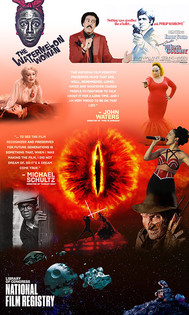 'Return of the Jedi' Among 25 Eclectic Films Joining National Film RegistryLibrarian of Congress Carla Hayden announced the annual selection of 25 influential motion pictures to be inducted into the National Film Registry of the Library of Congress. Selected for their cultural, historic or aesthetic importance to preserve the nation's film heritage, the newest selections include epic trilogies, major roles for Jennifer Lopez and Cicely Tyson, extraordinary animated features, comedy and music, and films that took on racially-motivated violence against people of color decades ago.Learn more about the 2021 National Film Registry. 'Return of the Jedi' Among 25 Eclectic Films Joining National Film RegistryLibrarian of Congress Carla Hayden announced the annual selection of 25 influential motion pictures to be inducted into the National Film Registry of the Library of Congress. Selected for their cultural, historic or aesthetic importance to preserve the nation's film heritage, the newest selections include epic trilogies, major roles for Jennifer Lopez and Cicely Tyson, extraordinary animated features, comedy and music, and films that took on racially-motivated violence against people of color decades ago.Learn more about the 2021 National Film Registry. 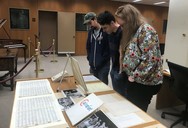 The “tick, tick … BOOM!” Research at the LibraryWhen Lin-Manuel Miranda visited the Library on Oct. 10, 2017, not many people knew about it. Clad in jeans and sweatshirt, the celebrated “Hamilton” creator quietly made his way to the Performing Arts Reading Room.There, with two companions, he began sifting through? the papers of theater composer Jonathan Larson. The trio was on a mission to bring one of Larson's works to cinematic life.Learn more. The 2021 Library of Congress Holiday CelebrationWatch the 2021 annual Library of Congress Holiday Celebration, streamed live from the Great Hall. This event honors three of the winter holidays customarily commemorated in the U.S.: Christmas, Hanukkah, & Kwanzaa.Watch the livestream. The “tick, tick … BOOM!” Research at the LibraryWhen Lin-Manuel Miranda visited the Library on Oct. 10, 2017, not many people knew about it. Clad in jeans and sweatshirt, the celebrated “Hamilton” creator quietly made his way to the Performing Arts Reading Room.There, with two companions, he began sifting through? the papers of theater composer Jonathan Larson. The trio was on a mission to bring one of Larson's works to cinematic life.Learn more. The 2021 Library of Congress Holiday CelebrationWatch the 2021 annual Library of Congress Holiday Celebration, streamed live from the Great Hall. This event honors three of the winter holidays customarily commemorated in the U.S.: Christmas, Hanukkah, & Kwanzaa.Watch the livestream.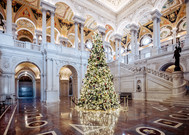 Holiday Gift Guide at the Library of Congress ShopDeck the halls, the Library of Congress Holiday Gift Guide has arrived! Explore our unique collection of holiday themed items, all inspired by the Library.Shop the Library's Holiday Gift Guide. Holiday Gift Guide at the Library of Congress ShopDeck the halls, the Library of Congress Holiday Gift Guide has arrived! Explore our unique collection of holiday themed items, all inspired by the Library.Shop the Library's Holiday Gift Guide.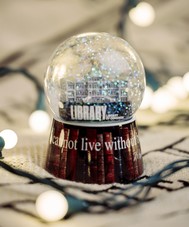 The Library Adopts New Digital Collections StrategyAs of this fall, the Library has a new blueprint for collecting born-digital content. The updated strategy succeeds a digital collecting plan implemented in 2017, whose objectives have been mostly achieved. But the new strategy also goes beyond that plan. The new? five-year plan covers the full lifecycle ofborn-digital materials.Read more. The Library Adopts New Digital Collections StrategyAs of this fall, the Library has a new blueprint for collecting born-digital content. The updated strategy succeeds a digital collecting plan implemented in 2017, whose objectives have been mostly achieved. But the new strategy also goes beyond that plan. The new? five-year plan covers the full lifecycle ofborn-digital materials.Read more.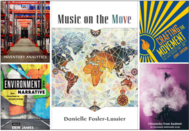 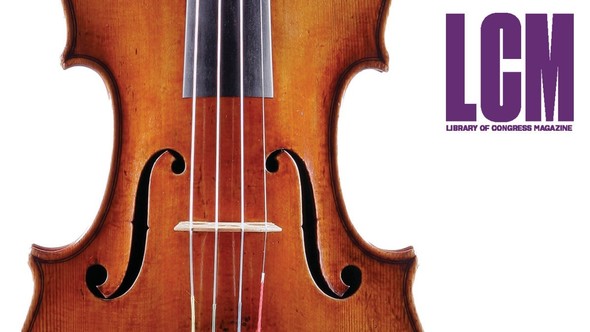 New Magazine: Gifts That Keep GivingOver the decades, donations from civic-minded citizens have helped build the extraordinary holdings of the Library of Congress. Also, a new collection chronicles the creation of G.I. Joe and an 18th-century volume provides the earliest slave narrative in the United States. Learn how? generations of civic-minded citizens have helped build the Library's collections in the latest issue of the Library of Congress Magazine (LCM).? Read the new issue of the Library of Congress Magazine. New Magazine: Gifts That Keep GivingOver the decades, donations from civic-minded citizens have helped build the extraordinary holdings of the Library of Congress. Also, a new collection chronicles the creation of G.I. Joe and an 18th-century volume provides the earliest slave narrative in the United States. Learn how? generations of civic-minded citizens have helped build the Library's collections in the latest issue of the Library of Congress Magazine (LCM).? Read the new issue of the Library of Congress Magazine.  Friends of the Library of Congress brings together a community of donors committed to preserving this nation's cultural memory. This group is integral in advancing the Library's mission to engage, inspire, and inform and help make everything possible from digital resources to public programming to exhibitions.Join now and take part in unique opportunities to see, experience, and learn from the Library's staff and collections first-hand. Friends of the Library of Congress brings together a community of donors committed to preserving this nation's cultural memory. This group is integral in advancing the Library's mission to engage, inspire, and inform and help make everything possible from digital resources to public programming to exhibitions.Join now and take part in unique opportunities to see, experience, and learn from the Library's staff and collections first-hand. |
November News from the Library of CongressNovember is Native American Heritage Month
 What started at the turn of the century as an effort to create a day of recognition for the significant contributions the first Americans made to the establishment and growth of the U.S., has resulted in a month being designated for that purpose.The Library of Congress, National Archives and Records Administration, National Endowment for the Humanities, National Gallery of Art, National Park Service, Smithsonian Institution and United States Holocaust Memorial Museum join in paying tribute to the rich ancestry and traditions of Native Americans with this joint web portal highlighting collections, resources and events: nativeamericanheritagemonth.gov/? What started at the turn of the century as an effort to create a day of recognition for the significant contributions the first Americans made to the establishment and growth of the U.S., has resulted in a month being designated for that purpose.The Library of Congress, National Archives and Records Administration, National Endowment for the Humanities, National Gallery of Art, National Park Service, Smithsonian Institution and United States Holocaust Memorial Museum join in paying tribute to the rich ancestry and traditions of Native Americans with this joint web portal highlighting collections, resources and events: nativeamericanheritagemonth.gov/?  Living Nations, Living WordsEarlier this month, Librarian of Congress Carla Hayden appointed U.S. Poet Laureate Joy Harjo to a third term, making Harjo the second laureate to receive this extension since terms for the position were established in 1943.During her third term, Harjo will focus on her signature project, “Living Nations, Living Words,”? a digital project that maps 47 contemporary Native American poets across the country. The map connects to a new online audio collection developed by Harjo and housed in the Library's American Folklife Center, which features the participating poets reading and discussing an original poem.Read the announcement: ? loc.gov/item/prn-20-075/?loclr=ealn Living Nations, Living WordsEarlier this month, Librarian of Congress Carla Hayden appointed U.S. Poet Laureate Joy Harjo to a third term, making Harjo the second laureate to receive this extension since terms for the position were established in 1943.During her third term, Harjo will focus on her signature project, “Living Nations, Living Words,”? a digital project that maps 47 contemporary Native American poets across the country. The map connects to a new online audio collection developed by Harjo and housed in the Library's American Folklife Center, which features the participating poets reading and discussing an original poem.Read the announcement: ? loc.gov/item/prn-20-075/?loclr=ealn 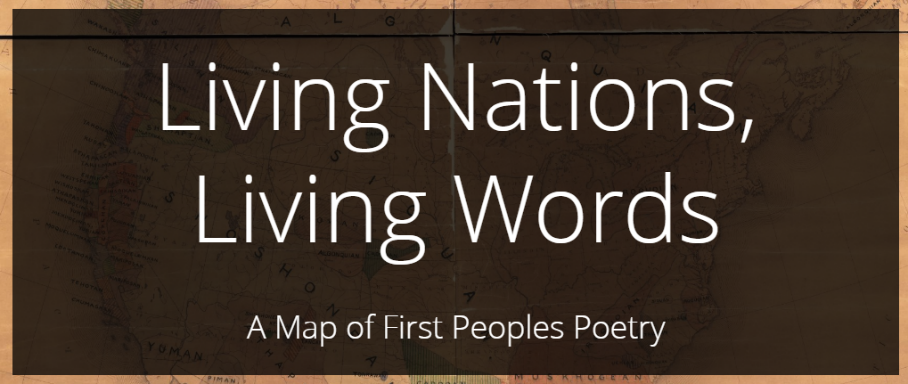 Everyday Mysteries: Sweet Potato vs. YamJust in time for Thanksgiving, tackle an important question – what's is the difference between sweet potatoes and yams? You can find out the answer to this question and other everyday mysteries by checking out fun science facts from the Library of Congress!Discover the Answer: loc.gov/everyday-mysteries/item/what-is-the-difference-between-sweet-potatoes-and-yams/?loclr=ealnEveryday Mysteries: loc.gov/everyday-mysteries/?loclr=ealn Everyday Mysteries: Sweet Potato vs. YamJust in time for Thanksgiving, tackle an important question – what's is the difference between sweet potatoes and yams? You can find out the answer to this question and other everyday mysteries by checking out fun science facts from the Library of Congress!Discover the Answer: loc.gov/everyday-mysteries/item/what-is-the-difference-between-sweet-potatoes-and-yams/?loclr=ealnEveryday Mysteries: loc.gov/everyday-mysteries/?loclr=ealn  New Virtual Series: Behind the BookIf you have ever wondered how a book goes from rough manuscript to published masterpiece and how an author rises from obscurity to fame, then a new series of programs from the Library of Congress is just for you. The new series, Behind the Book, provides a behind-the-scenes view of the world of American book publishing, highlighting the editors, designers, publicists, agents and publishers who make the books that win prizes and endure.? Series announcement and schedule: loc.gov/item/prn-20-078/?loclr=ealn 12/3 Webinar: "Influenza and Covid19: What To Expect This Winter"The Library of Congress' Health Services Division and Science, Technology and Business Division invite you to participate in a webinar, “Influenza and Covid19: What should we expect this winter?” featuring international experts on infectious disease outbreaks, epidemiology and modeling.? This webinar, scheduled for Thursday, Dec. 3 at 10 a.m., requires advance registration, which is limited to 1,000 participants. You can submit questions in advance for the panelists using the Ask A Librarian service. When submitting questions, please indicate that it is for the December 3 webinar.Register Now New Virtual Series: Behind the BookIf you have ever wondered how a book goes from rough manuscript to published masterpiece and how an author rises from obscurity to fame, then a new series of programs from the Library of Congress is just for you. The new series, Behind the Book, provides a behind-the-scenes view of the world of American book publishing, highlighting the editors, designers, publicists, agents and publishers who make the books that win prizes and endure.? Series announcement and schedule: loc.gov/item/prn-20-078/?loclr=ealn 12/3 Webinar: "Influenza and Covid19: What To Expect This Winter"The Library of Congress' Health Services Division and Science, Technology and Business Division invite you to participate in a webinar, “Influenza and Covid19: What should we expect this winter?” featuring international experts on infectious disease outbreaks, epidemiology and modeling.? This webinar, scheduled for Thursday, Dec. 3 at 10 a.m., requires advance registration, which is limited to 1,000 participants. You can submit questions in advance for the panelists using the Ask A Librarian service. When submitting questions, please indicate that it is for the December 3 webinar.Register Now 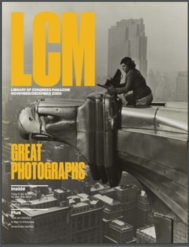 Library of Congress MagazineExceptional photographs communicate with viewers in a universal language to inspire, provoke, educate. In the November/December 2020 issue of LCM, Library of Congress curators and reference librarians choose great photographs from Library collections that have inspired them, including images from the dawn of the photography to the present day.Download Magazine: https://loc.gov/lcm/pdf/LCM_2020_1112.pdf Library Seeks Applicants for the 2021 Junior Fellows Summer Internship ProgramThe Library of Congress is seeking applicants for its next Junior Fellows Summer Internship Program, which will run from? May 24 – July 30, 2021. This 10-week paid internship is open to undergraduate and graduate students interested in learning and conducting research at the largest library in the world. For the second year in a row, the internship will be conducted virtually.? The deadline to apply is? Monday, Nov. 30, 2020. Students can learn more information or apply to the program by visiting? loc.gov/item/internships/junior-fellows-program/. Library of Congress MagazineExceptional photographs communicate with viewers in a universal language to inspire, provoke, educate. In the November/December 2020 issue of LCM, Library of Congress curators and reference librarians choose great photographs from Library collections that have inspired them, including images from the dawn of the photography to the present day.Download Magazine: https://loc.gov/lcm/pdf/LCM_2020_1112.pdf Library Seeks Applicants for the 2021 Junior Fellows Summer Internship ProgramThe Library of Congress is seeking applicants for its next Junior Fellows Summer Internship Program, which will run from? May 24 – July 30, 2021. This 10-week paid internship is open to undergraduate and graduate students interested in learning and conducting research at the largest library in the world. For the second year in a row, the internship will be conducted virtually.? The deadline to apply is? Monday, Nov. 30, 2020. Students can learn more information or apply to the program by visiting? loc.gov/item/internships/junior-fellows-program/. |
November News from the Library of CongressNovember is Native American Heritage Month
 What started at the turn of the century as an effort to create a day of recognition for the significant contributions the first Americans made to the establishment and growth of the U.S., has resulted in a month being designated for that purpose.The Library of Congress, National Archives and Records Administration, National Endowment for the Humanities, National Gallery of Art, National Park Service, Smithsonian Institution and United States Holocaust Memorial Museum join in paying tribute to the rich ancestry and traditions of Native Americans with this joint web portal highlighting collections, resources and events: nativeamericanheritagemonth.gov/? What started at the turn of the century as an effort to create a day of recognition for the significant contributions the first Americans made to the establishment and growth of the U.S., has resulted in a month being designated for that purpose.The Library of Congress, National Archives and Records Administration, National Endowment for the Humanities, National Gallery of Art, National Park Service, Smithsonian Institution and United States Holocaust Memorial Museum join in paying tribute to the rich ancestry and traditions of Native Americans with this joint web portal highlighting collections, resources and events: nativeamericanheritagemonth.gov/?  Living Nations, Living WordsEarlier this month, Librarian of Congress Carla Hayden appointed U.S. Poet Laureate Joy Harjo to a third term, making Harjo the second laureate to receive this extension since terms for the position were established in 1943.During her third term, Harjo will focus on her signature project, “Living Nations, Living Words,”? a digital project that maps 47 contemporary Native American poets across the country. The map connects to a new online audio collection developed by Harjo and housed in the Library's American Folklife Center, which features the participating poets reading and discussing an original poem.Read the announcement: ? loc.gov/item/prn-20-075/?loclr=ealn Living Nations, Living WordsEarlier this month, Librarian of Congress Carla Hayden appointed U.S. Poet Laureate Joy Harjo to a third term, making Harjo the second laureate to receive this extension since terms for the position were established in 1943.During her third term, Harjo will focus on her signature project, “Living Nations, Living Words,”? a digital project that maps 47 contemporary Native American poets across the country. The map connects to a new online audio collection developed by Harjo and housed in the Library's American Folklife Center, which features the participating poets reading and discussing an original poem.Read the announcement: ? loc.gov/item/prn-20-075/?loclr=ealn  Everyday Mysteries: Sweet Potato vs. YamJust in time for Thanksgiving, tackle an important question – what's is the difference between sweet potatoes and yams? You can find out the answer to this question and other everyday mysteries by checking out fun science facts from the Library of Congress!Discover the Answer: loc.gov/everyday-mysteries/item/what-is-the-difference-between-sweet-potatoes-and-yams/?loclr=ealnEveryday Mysteries: loc.gov/everyday-mysteries/?loclr=ealn Everyday Mysteries: Sweet Potato vs. YamJust in time for Thanksgiving, tackle an important question – what's is the difference between sweet potatoes and yams? You can find out the answer to this question and other everyday mysteries by checking out fun science facts from the Library of Congress!Discover the Answer: loc.gov/everyday-mysteries/item/what-is-the-difference-between-sweet-potatoes-and-yams/?loclr=ealnEveryday Mysteries: loc.gov/everyday-mysteries/?loclr=ealn  New Virtual Series: Behind the BookIf you have ever wondered how a book goes from rough manuscript to published masterpiece and how an author rises from obscurity to fame, then a new series of programs from the Library of Congress is just for you. The new series, Behind the Book, provides a behind-the-scenes view of the world of American book publishing, highlighting the editors, designers, publicists, agents and publishers who make the books that win prizes and endure.? Series announcement and schedule: loc.gov/item/prn-20-078/?loclr=ealn 12/3 Webinar: "Influenza and Covid19: What To Expect This Winter"The Library of Congress' Health Services Division and Science, Technology and Business Division invite you to participate in a webinar, “Influenza and Covid19: What should we expect this winter?” featuring international experts on infectious disease outbreaks, epidemiology and modeling.? This webinar, scheduled for Thursday, Dec. 3 at 10 a.m., requires advance registration, which is limited to 1,000 participants. You can submit questions in advance for the panelists using the Ask A Librarian service. When submitting questions, please indicate that it is for the December 3 webinar.Register Now New Virtual Series: Behind the BookIf you have ever wondered how a book goes from rough manuscript to published masterpiece and how an author rises from obscurity to fame, then a new series of programs from the Library of Congress is just for you. The new series, Behind the Book, provides a behind-the-scenes view of the world of American book publishing, highlighting the editors, designers, publicists, agents and publishers who make the books that win prizes and endure.? Series announcement and schedule: loc.gov/item/prn-20-078/?loclr=ealn 12/3 Webinar: "Influenza and Covid19: What To Expect This Winter"The Library of Congress' Health Services Division and Science, Technology and Business Division invite you to participate in a webinar, “Influenza and Covid19: What should we expect this winter?” featuring international experts on infectious disease outbreaks, epidemiology and modeling.? This webinar, scheduled for Thursday, Dec. 3 at 10 a.m., requires advance registration, which is limited to 1,000 participants. You can submit questions in advance for the panelists using the Ask A Librarian service. When submitting questions, please indicate that it is for the December 3 webinar.Register Now  Library of Congress MagazineExceptional photographs communicate with viewers in a universal language to inspire, provoke, educate. In the November/December 2020 issue of LCM, Library of Congress curators and reference librarians choose great photographs from Library collections that have inspired them, including images from the dawn of the photography to the present day.Download Magazine: https://loc.gov/lcm/pdf/LCM_2020_1112.pdf Library Seeks Applicants for the 2021 Junior Fellows Summer Internship ProgramThe Library of Congress is seeking applicants for its next Junior Fellows Summer Internship Program, which will run from? May 24 – July 30, 2021. This 10-week paid internship is open to undergraduate and graduate students interested in learning and conducting research at the largest library in the world. For the second year in a row, the internship will be conducted virtually.? The deadline to apply is? Monday, Nov. 30, 2020. Students can learn more information or apply to the program by visiting? loc.gov/item/internships/junior-fellows-program/. Library of Congress MagazineExceptional photographs communicate with viewers in a universal language to inspire, provoke, educate. In the November/December 2020 issue of LCM, Library of Congress curators and reference librarians choose great photographs from Library collections that have inspired them, including images from the dawn of the photography to the present day.Download Magazine: https://loc.gov/lcm/pdf/LCM_2020_1112.pdf Library Seeks Applicants for the 2021 Junior Fellows Summer Internship ProgramThe Library of Congress is seeking applicants for its next Junior Fellows Summer Internship Program, which will run from? May 24 – July 30, 2021. This 10-week paid internship is open to undergraduate and graduate students interested in learning and conducting research at the largest library in the world. For the second year in a row, the internship will be conducted virtually.? The deadline to apply is? Monday, Nov. 30, 2020. Students can learn more information or apply to the program by visiting? loc.gov/item/internships/junior-fellows-program/. |
Library Welcomes Science and Social Studies Teachers for New School YearThe Library of Congress began the 2023-2024 school year by welcoming two teachers to its Capitol Hill campus.  Kelsey Beeghly, a science curriculum and assessment coordinator from Orlando, Florida, will serve as the Library’s 2023-2024 Albert Einstein Distinguished Educator Fellow.Tyron Bey, a middle school social studies teacher from Prince George’s County, Maryland, has been named the 2023-2024 Teacher-in-Residence at the Library of Congress.Beeghly and Bey will work closely with staff members in the Library’s Center for Learning, Literacy and Engagement to help make primary sources from the Library’s collections more accessible for teachers, students and families throughout the United States. They will assist in developing materials and experiences for other educators, and collaborate in the creation of a space in the Thomas Jefferson Building’s future Learning Center for families and student groups.Click here for more information. You are subscribed to Latest News from the Library of Congress.
|
Innovator in Residence Invites Public to Experience Chinatown ReconstructionArtist, educator and 2023 Library of Congress Innovator in Residence Jeffrey Yoo Warren is inviting the public to visit an immersive 3D reconstruction of historic Providence, Rhode Island’s Chinatown in 1914, recreated using archival photographs and records from the Library’s collection. The model is the first part of Yoo Warren’s project, Seeing Lost Enclaves: Relational Reconstructions of Erased Historic Neighborhoods of Color, which aims to unearth lost histories from across the United States.Complete with navigable buildings, glowing lamplights and the sounds of evening rain, the virtual Providence Chinatown reimagines a once-vibrant neighborhood, of which little trace remains today.Click here for more information. You are subscribed to Latest News from the Library of Congress.
|
The Library of Congress is excited to announce that the Chronicling America Historic Newspapers website is in the process of transitioning from the legacy Chronicling America interface to a new Chronicling America interface and back-end search infrastructure. In Spring 2024, visitors going to chroniclingamerica.loc.gov will be re-directed to the new Chronicling America website, which will continue to provide free access to historic digitized newspapers. The exact date will be announced in the coming months on the new Chronicling America Website Migration page, on the Chronicling America Historical Newspapers email list, and also added to the home pages on both versions of the Chronicling America website. The current version of the website will be officially sunset later in 2024.Users are encouraged to begin using the new Chronicling America website for research. A Research Guide on using Chronicling America in the new environment is available. In the new system, the digitized newspapers will become part of a larger Library of Congress digital collections framework that recently received major upgrades to accommodate future growth and expansion of the collection. New website features include faceted browse options (refine searches by ethnicity, location, subject, language, etc.), improved image viewing, improved Advanced Search options, and more. The new interface also allows users to browse digitized titles in a map. Uploads to the new interface are now automated so you may notice that there are more pages available in the new interface than the longstanding version of Chronicling America. As part of the updates, the United States Newspaper Directory 1690-Present has also been migrated into a separate searchable collection. Users can access the new Directory of U.S. Newspapers in American Libraries, which is a searchable index of newspapers published in the United States since 1690. This directory can help identify what titles exist for a specific place and time, and how to access them. For a detailed overview of the Directory, search tips, and FAQs, please consult the Directory of U.S. Newspapers in American Libraries: A Guide for Researchers.  Digital Humanities scholars and researchers who access the collection via computational methods will continue to have access to bulk OCR but should transition to using the Loc.Gov API at loc.gov/apis. Bulk OCR downloads can be accessed from the longstanding OCR Data page until further notice when a new "Datasets" page will be made available on the new site.Chronicling America was originally launched in 2007 and later updated to the current version of the website in 2011. Since that time, the site saw the growth of the collection to include over 21 million newspaper pages from every state, the District of Columbia, Puerto Rico, and the U.S. Virgin Islands as part of the National Digital Newspaper Program (NDNP). Co-sponsored by the National Endowment for the Humanities (NEH), NDNP continues to award funds to cultural heritage institutions around the United States to participate in the program.Please send feedback about the new website to ndnptech@loc.gov and subscribe to the Chronicling America Historical Newspapers email list for more updates.
|



 Links
Links  Articles
Articles  Blogs
Blogs  Videos
Videos  News
News  Colors
Colors 

 New links
New links
